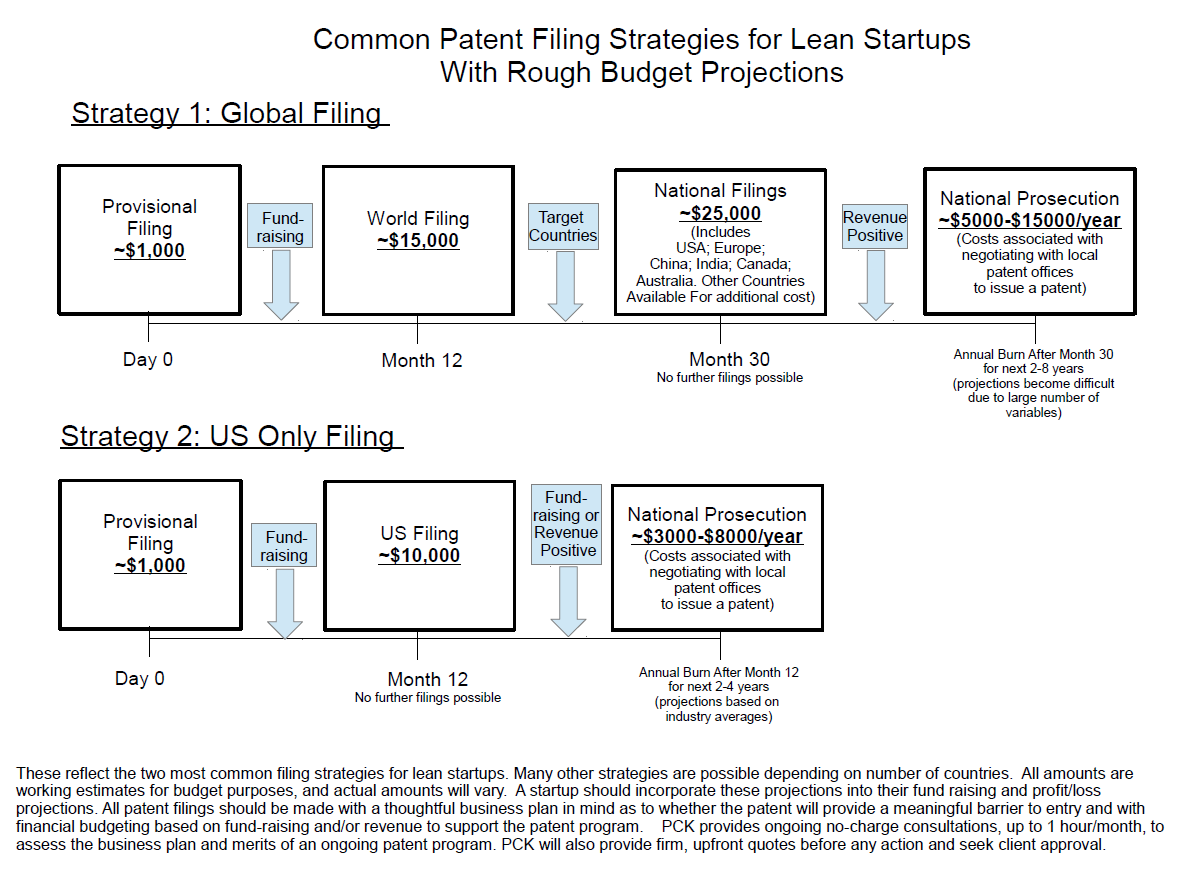Every tech startup that is looking to patent is faced with their own version of the classic chicken-or-egg problem: “I need money to get a patent, but I need a patent to attract investment and to secure my long-term competitive edge.”
The solution, of course, is that a small embryo of a chicken came first – which in patent-speak is what we refer to as a provisional patent application. A provisional patent application is a relatively inexpensive means of getting into the patent system while pushing back the major spends as far as possible into the future, for a time when you are better financed to handle the costs.
It is important that any tech startup investing in patents be able to accurately forecasts patent costs into the future. We have prepared a guide that outlines the timelines and major spend points for two common patent filing strategies: a global patent filing and US-only patent filing.

The first thing one might notice is that a patent does not entail a single up-front cost. Patent filing costs are spread out over the course of typically 3-8 years, with costs starting low with an initial provisional patent application, and escalating as formal patent applications are filed and prosecuted in each jurisdiction of interest.
This staged costing provides the opportunity for patentees to continually re-evaluate the business case for patent protection in any given country, assess one’s ability to obtain investment or financing, and to consider whether it makes financial sense to continue pursuing patent protection in that particular market.
For example, the one’s evaluation of the business case for patent protection may play out as follows:
|
Day 0: |
You file a provisional patent application on speculation that a patent is the best way to protect or monetize your invention. |
|
Month 12: |
Your provisional patent application bought you 12 months to test market waters, speak to investors, and assess whether a formal patent application is worth the spend, or if that money could be better spent elsewhere. You decide that your invention has international appeal so you file a formal international patent application. |
| Month 30: | Your international patent application bought you another 18 months to zone in on a handful of jurisdictions where patent protection will generate the greatest return on your investment. You file national patent applications in the United States, Canada, the EU, and China. |
The above example is only one possible patent filing strategy. Consult with a patent professional to determine the patent filing strategy that is most appropriate to your individual case. You can begin by finding out more about provisional patent applications here.